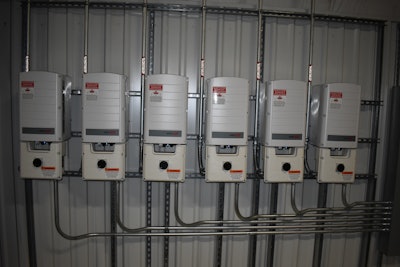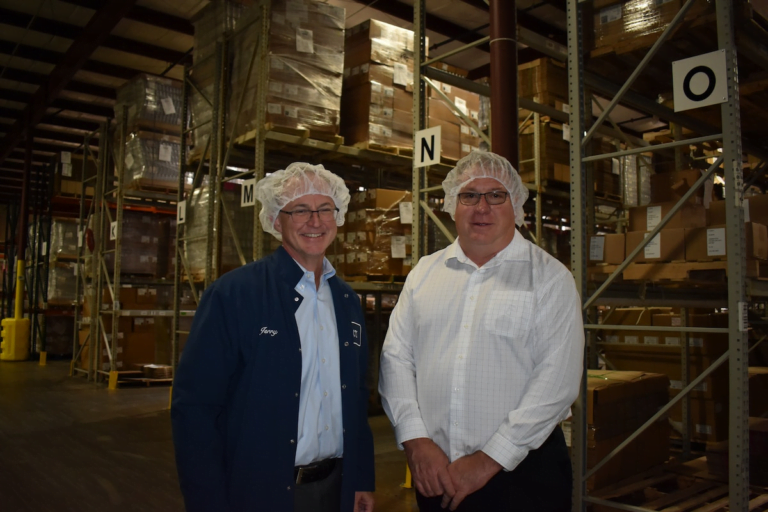Combined Technologies Inc. (CTI) is a small to midsize business (SMB) with a view to sustainability. The contract packager offers value-added services that include developing sustainable packaging that meets the needs of its customers while providing personalized service for better quality program management.
Based in Bristol, Ind., this contract packager uses scales, counters, check weighers, metal detectors, bottling machines, vertical and horizontal forms, fills, and seals; sleeve/band applicators with radiant heat and steam tunnels, and cartons to provide packaging services to customers.
As a packager for the vitamin, nutraceutical, and confectionery industries, CTI must comply with clean room standards and food safety requirements. The contract packager has five closed chambers that apply positive air pressure to ensure that each one remains free of unwanted dust and other particles. Upon entering the facility, each employee dons personal protective equipment (PPE) and cleans their shoes on a semi-automatic mat. An additional room is reserved for manual machine washdown.
If not sustainable packaging then a sustainable facility
 The solar Edge power inverter controls CTI’s solar production.
The solar Edge power inverter controls CTI’s solar production.
Most CM/CPs have very little say in the sourcing of ingredients and packaging materials, especially when working with an established brand or packaged goods (CPG) company with a strict details. This makes sustainability goals challenging to achieve in the traditional sense.
However, CTI is turning to what it can control: the sustainable parts of its facility. Today, with 480 solar panels on the roof, CTI supplies 60% of its power from the sun and plans to reach 100% if the shortfall in the solar supply chain is allowed.
“Our corporate goal is to eliminate waste whenever possible, or recycle it from the plant,” said Jerry Thompson, president of CTI. “And we want to get to that zero waste plant. That’s always been our goal and we’ll get there – even if it takes baby steps.”
Solar Edge, CTI’s solar power inverter, tracks energy production and its impact on the environment. According to Solar Edge, CTI saved 882,829.1 lb of CO2 emissions—the equivalent of planting 6,671 trees—this month alone through its solar energy production. CTI also encourages other companies to make the transition to clean energy.
Develop sustainable packaging offers
Beyond solar and CTI recycling efforts in plastic, paper, and aluminum, the contract packager offers value-added contract packaging services that allow its customers to carry either a food concept or product, where the company will create a packaging solution, offering. guide from start to completion. Services include sourcing materials and linings, graphic design, and regulatory aspects such as child resistant packaging.
CTI procures and manages packaging design and materials procurement, manages inventory, and organizes processes and reporting. Program management services extend to brands and CPG already set to graphic design, packaging design, and suppliers. According to Thompson, CTI prefers to work this way because it is an additional motivation to avoid waste.
“It helps us to be more responsible as well [on the sustainability front]because when we buy it, we try not to waste materials,” he said.
Top customer service
With each project or service provided by CTI, one to three employees are assigned per customer to ensure that the contract packager remains aware of its customer’s needs.
“We don’t want anything to go to voicemail, or emails and things like that,” Thompson said. “We’re trying to make it personal. You can’t always interpret everything from a text, instant message, or a quick email.
That approach has additional benefits, he said. When multiple team members are involved in customer calls, the team can provide each other with feedback to identify the customer’s main concerns.
CTI developed a 100% reusable, water-soluble packaging solution for one of its customers, a growing packaging materials company. The packaging has a very small barrier, which means that many things have to be taken into account, such as the type of product that can enter the packaging-food, cleaning products, on-the-go products, or vitamins- and where the packaging machines can run successfully.
CTI helped the company research the suitability and potential uses of water-soluble packaging as well as consider the properties of the packaging as it enters the waste stream.
“Is it something that you can take and use underwater, with water, without water, etc.? How does it work with the machinery? What if they have to change the DNA of the product? These are the things to consider and test,” said Thompson. “With a focus on the future, we are working toward more compostable packaging for our pouch machines as well as water-soluble solutions that will benefit future generations. “
Compostable packaging for the future
 CTI showcased its new compostable packages at PACK EXPO International.
CTI showcased its new compostable packages at PACK EXPO International.
Many companies are trying to make compostable products, but market development is slow.
“We currently have a customer with a new product to bring to market and we are starting the testing phase. We are very excited to show it to all customers and ask them, ‘Instead of X, have you thought about using a compostable material and marketing it to call that their consumers can put it in their compost bin after they’re done,’ ” said Thompson.
CTI launched its new compostable offering in October at the PACK EXPO International show 2022 at the McCormick Place convention center in Chicago. The packages are available in two different samples—one biodegradable and the other compostable. The oxygen and moisture barriers of the packages are very efficient so that the products do not risk spoiling or changing the texture. Accessories range from changing bottles to travel and sample packs. All three samples were certified to ASTM 6400.
Compostable materials are more expensive than regular packaging, Thompson said, but CTI is looking for innovations that can be used to lower prices. Consumers are also proving more willing to invest in sustainable practices for future generations.
Since the packaging is white, it may not be better for some graphic branding, but Thompson compares its current state to the first versions of the electric car. When first invented, it was not popular and the idea was rejected until Tesla and others came out with their own version that skyrocketed the electric car to popularity.
“While composting your used packaging materials may be a no-brainer today, it could be the next big step in reducing environmental waste,” says Thompson.
